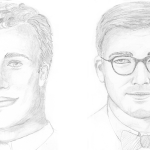It’s a question not uncommonly heard on Georgetown’s campus, asked by tour groups, visitors and even the random Georgetown student wondering why she has to walk to Rosslyn.
Why doesn’t Georgetown have a stop on Washington, D.C.’s otherwise extensive Metro system? Why did we get passed up while nearly every other neighborhood in the city gets one or even two stops? (We see you, Farragut Square.)
It’s not a bad question, and because of the overflowing traffic in Georgetown, it’s definitely a fair one.
Throughout American history, especially in the early 20th century, wealthy neighborhoods were the first to receive desirable public transportation access — the fruit of political patronage and influence — while poor communities had to wait for decades.
Regardless of the unfairness of the situation, why do Metro trains run at 60 mph in some of D.C.’s poorest areas while the G2 bus crawls at 5 mph up P Street, given the usual pattern?
The answer to this question is a sacrosanct chapter of Georgetown history. When D.C. was planning the Metro system in the 1960s and 1970s, wealthy Georgetown residents aimed to block the creation of a Georgetown station. They feared that public transit would allow poor, predominantly black families entry into the neighborhood, causing decreased real estate values for the community values for station. T white residents. As hundreds of wealthy socialite wives clutched their pearls and fainted at the thought, hundreds of their well-connected husbands dialed the highest echelons of power and blocked the Metro. Georgetown — respectable, white Georgetown, at least — was saved.
The story is simple: Rich people didn’t want poor people around, which meant no Metro station. Sorry, Georgetown students. Enjoy walking across the Key Bridge.
While this story provides a convenient explanation, it is not true in the slightest.
As Zachary Schrag writes in The Great Society Subway, “Although Georgetown residents did oppose a transit station, their attitude was essentially irrelevant, for a Georgetown station was never seriously considered… Any tunnel under the Potomac would have been so deep at the river’s edge to render a station there impractical… Highway planners, not Georgetown residents, vetoed this option.”
How bold of Schrag to rob us so quickly of one of our founding legends.
What are the implications of this sudden debunking of a cherished Metro myth, more nefarious than what Dan Brown did to Mary Magdalene in “The Da Vinci Code?” More importantly, what does this myth’s longevity say about us, those who have been telling it to friends and guests for decades?
First, like all folklore, it points out the danger of our reductionist collective memory. The implicit moral of this story is that Georgetown’s wealthy white elites were racists. Simple story, easy to understand. The reality, inevitably, is more nuanced.
Although everyone who has ever lived off campus knows that vilifying the “town folk” is a barrel of laughs, the residents of Georgetown are no more culpable than the university and its students in this city’s legacy of struggling for racial justice.
This brings us to the more unsettling reality lurking behind this myth. By trivializing an episode of racism — real or fictitious — just enough to place it in the canon of tour group lore, we have made institutional racism cute —just enough the way that Wiley Coyote can be endearing.
Notice that the mustache-twirling villain of this myth is never us. It’s them: old, wealthy, local, whatever. Georgetown? An innocent by stander to entrenched racism.
When we tell this story, however trite or lamenting, it is almost always told as though we are throwing our hands in the air, unable to do anything. Race problems in D.C.? Someone else’s problem, surely, and it’s too late to do much anyway.
Presumably, this is not what St. Ignatius had in mind when he told us to set the world on fire.
Nearly 40 years after the Metro first started rolling in the deep, it’s finally time — not just because it’s incorrect but because Georgetown must engage differently in this city.
Where institutional racism exists, our role is not to turn it into an anecdote for prospective freshmen on campus tours but to fight it instead. Where historical wrongs exist, our job is not to trivialize them but to shine a light on them.
As long as Georgetown students understand D.C.’s haunting history of racism through simplistic, imaginary plot lines, they will never have any tangible impact on the legacy of that history.
 Tucker Cholvin and Thomas Christiansen are seniors in the School of Foreign Service. Culture Clash appears every other Tuesday.
Tucker Cholvin and Thomas Christiansen are seniors in the School of Foreign Service. Culture Clash appears every other Tuesday.



















